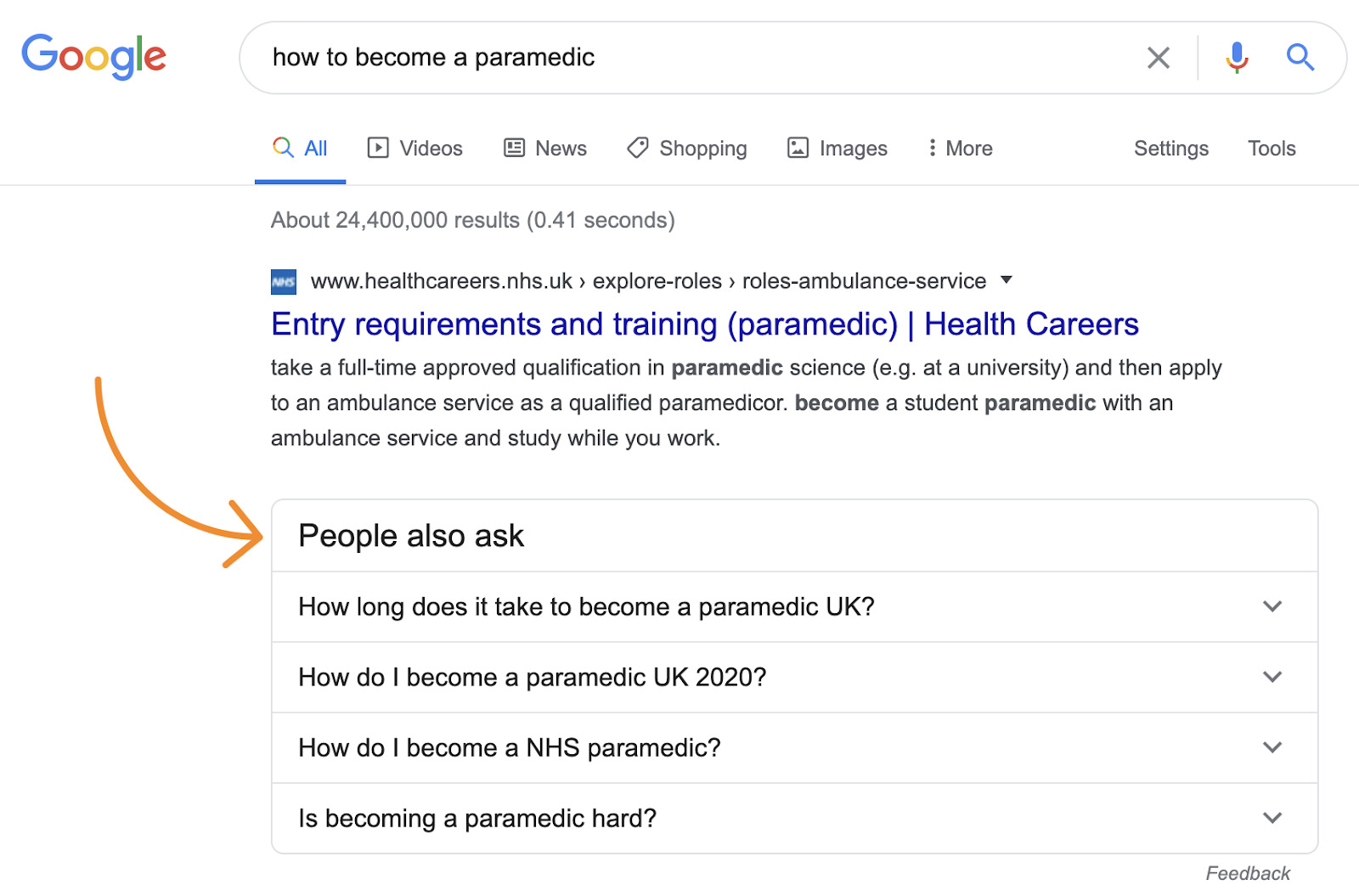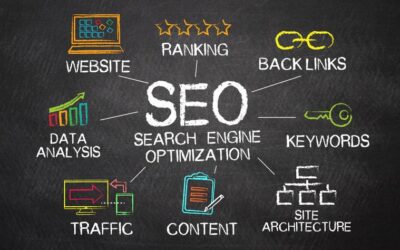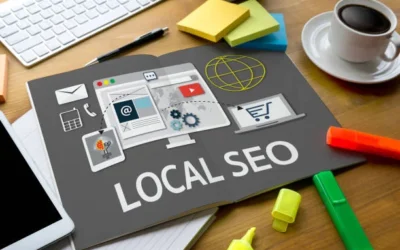Why SEO Is Important in 2025: What Every Business Should Know
Table of Contents:
- Introduction: SEO in 2025
- Why SEO Is Important for Businesses Today
- The Evolution of SEO: From Keywords to AI
- Top 5 Reasons Why SEO Is Important in 2025
- Main Content: 5 Key Questions Answer
- The Different Types of SEO Businesses Need
- How to Build a Strong SEO Strategy in 2025
- SEO in the Age of AI and Voice Search
- Common SEO Mistakes Businesses Still Make
- Case Studies: Businesses That Proved Why SEO Is Important
- Final Thoughts: Why SEO Is Non-Negotiable
- Call to Action
Introduction: SEO in 2025
We live in a world where the internet is the first stop for nearly every purchase decision. Whether someone is ordering pizza, choosing a lawyer, or looking for enterprise software, their journey almost always starts with a search engine.
And here’s the kicker: if your business doesn’t show up where your customers are searching, you don’t exist in their world. That’s why SEO is important.
In 2025, Google alone processes over 8.5 billion searches daily. People don’t just search, they expect fast, relevant, and trustworthy answers. Businesses that understand this dominate their markets. Those who ignore SEO fall into obscurity.
This article will not only explain why SEO is essential in 2025 but also provide practical strategies, answer pressing questions, and show real-world examples of SEO success.
Why SEO Is Important for Businesses Today
From the restaurant someone chooses for dinner to the law firm they hire after an accident, search engines act as the ultimate connector between consumer needs and business solutions.
The Search-First Mentality of Modern Consumers
- A parent doesn’t wait to ask neighbors for referrals when they need a pediatrician. They search for “best pediatrician near me.”
- A homeowner doesn’t flip through mailers when their AC breaks in July. They type “emergency AC repair” into Google.
- A traveler in a new city doesn’t rely on chance when picking dinner. They pull up Google Maps, check reviews, and go to the top-rated option.
This search-first behavior explains why SEO is important: it ensures your business shows up at the exact moment people are ready to make a decision.
The Numbers Don’t Lie
To put this in perspective:
- Over 8.5 billion Google searches happen every single day. That’s billions of opportunities for businesses to connect with customers.
- 75% of users never scroll past the first page. If you’re not visible on that first page, you’re practically invisible.
- Websites that appear in the top 3 results get 10x more clicks than those in lower positions. The higher you rank, the more trust and traffic you gain.
These numbers highlight not just the importance of SEO but also the urgency of investing in it now. Every day you’re not optimized, you’re losing potential customers.
The Competitive Reality
Here’s the harsh truth: without SEO, your business isn’t competing. You might have the best product, most skilled team, or most competitive prices, but none of that matters if people can’t find you.
Why Not Have SEO Hand Customers to Competitors
For example:
- A local law firm that doesn’t rank for “car accident lawyer [city]” isn’t just invisible, it’s losing cases to competitors who invested in SEO.
- An e-commerce store without optimized product pages won’t show up in searches like “buy wireless headphones online.” Instead, shoppers will click on bigger competitors.
Why SEO is Important Today, More Than Ever
- Consumer trust is built online. People trust Google results, especially the top ones. If you’re there, you automatically earn credibility.
- Purchasing decisions start with research. Even if customers buy offline, they almost always research online first.
- Digital-first competition is increasing. Every day, more businesses are investing in SEO. The longer you wait, the harder it becomes to catch up.
The Evolution of SEO: From Keywords to AI

To understand why SEO is important today, it helps to look at where it started.
- 2000–2010: The Wild West of SEO
- Websites stuffed keywords, bought spammy backlinks, and tricked search engines. It worked temporarily.
- 2010–2020: Quality Over Quantity
- Google introduced major updates (Panda, Penguin, Hummingbird) to penalize low-quality practices. Suddenly, content, trust, and user experience mattered more.
- 2020–2024: Mobile, Voice, and AI
- Voice assistants, mobile-first indexing, and AI-driven search changed the game. SEO became less about keywords and more about intent.
- 2025 and beyond: Semantic & Personalized SEO
- Today, search engines don’t just read your words; they interpret meaning. They use AI to personalize results based on location, history, and behavior.
Top 5 Reasons Why SEO Is Important in 2025
If people can’t see you, they can’t buy from you. Ranking on page one builds exposure and credibility.
Users trust organic results more than ads. Strong SEO signals, reviews, authority backlinks, and content depth boost credibility.
Paid ads stop when the budget stops. SEO builds momentum. A single blog post can bring traffic for years.
Competitors are already optimizing. If you’re not, you’re essentially giving them to your customers.
Main Content: 5 Key Questions Answered
SEO and ads work together, but SEO provides compounding returns. Ads are like renting; SEO is like owning.
Yes! A bakery ranking for “best cupcakes near me” will beat out large chains. Local SEO is a game-changer.
The Different Types of SEO Businesses Need
Optimizing website content with proper keywords, headers, meta descriptions, and internal links.
Backlinks, brand mentions, and reputation management outside your site.
Site speed, crawlability, mobile optimization, and structured data.
Optimizing Google Business Profiles, maps, and local citations is essential for small businesses.
Blogs, videos, podcasts, and infographics that build authority and attract organic traffic.
Together, these categories explain why SEO is important: it’s not just one thing, it’s an ecosystem.
How to Build a Strong SEO Strategy in 2025
SEO in 2025 is no longer about shortcuts or gimmicks; it’s about creating a holistic strategy that balances technology, content, and user experience. Businesses that succeed understand that SEO is not a single tactic but a combination of practices working together.
Here’s a detailed breakdown of how to build a future-proof SEO strategy this year:
1. Focus on Intent: Don’t Just Chase Keywords, Answer Questions
In the past, SEO was about cramming as many keywords as possible into a page. That doesn’t work anymore. Search engines have evolved; they now prioritize search intent, meaning why a user is searching, not just what they type.
For example:
- Someone searching “best running shoes for flat feet” isn’t just looking for a list of shoes; they want guidance, comparisons, and recommendations.
- A person typing “how to file for divorce in Texas” doesn’t want vague info; they need step-by-step instructions, legal context, and possibly a lawyer’s contact information.

- Research beyond keywords. Tools like Google’s “People Also Ask” box, AI assistants, and search autocomplete reveal what users want.
- Structure content around answers. Use clear headers, FAQs, and detailed guides that anticipate follow-up questions.
- Think like a customer. Ask yourself: If I searched this, what would I need to see to feel satisfied?
2. Invest in Content: Long-Form Guides, Blogs, and Multimedia Dominate Rankings
- Long-form guides (2,000+ words) show depth and expertise.
- Blogs keep your website fresh and target long-tail queries.
- Videos and podcasts increase engagement, and Google now indexes multimedia.
- Infographics and visuals make complex topics easier to digest.
Example: A local real estate agent who posts short blog updates may get some traffic. But one who publishes a 3,000-word home-buying guide with video walkthroughs, mortgage calculators, and FAQs will dominate search results and establish authority.
Action steps:
- Create pillar content (in-depth guides) supported by cluster content (blogs answering narrower questions).
- Repurpose content across formats: turn a blog into a video, a podcast into an infographic.
- Update old content regularly to keep it fresh and accurate.
3. Prioritize UX: Google Rewards Sites That Load Fast, Look Great on Mobile, and Are Easy to Use

In 2025, user experience (UX) is SEO Google’s algorithms factor in site performance, mobile design, and usability. If users bounce quickly, your rankings will drop, no matter how good your keywords are.
Key UX factors:
- Page Speed: A delay of even 1 second can reduce conversions by 7%. Compress images, use caching, and streamline code.
- Mobile Friendliness: Over 65% of searches happen on mobile. If your site doesn’t look great on phones, you’re losing customers.
- Navigation: Visitors should find what they need in 3 clicks or less. Confusing menus = lost traffic.
- Core Web Vitals: Google measures key aspects such as load time, interactivity, and layout stability. Fail these, and rankings suffer.
Example: An e-commerce site selling fashion may have excellent products, but if pages take 8 seconds to load, users will abandon it. Meanwhile, a competitor with a clean, fast, mobile-friendly site will win the sale.
This is why SEO is important: it forces businesses to improve not just their visibility but also their customer experience.
4. Leverage AI Tools: Use AI to Find Opportunities, but Don’t Let It Replace Authenticity
Artificial Intelligence has transformed SEO. Tools powered by AI can help with:
- Keyword research: Discovering long-tail, intent-driven queries.
- Competitor analysis: Identifying gaps and opportunities.
- Content optimization: Suggesting headings, meta tags, and readability improvements.
- Predictive analytics: Forecasting which topics will trend.
To leverage AI effectively in 2025:
- Use AI for data and research.
- Use human expertise for creativity, insight, and trustworthiness.
- Combine the two: let AI give you insights, but craft content with your unique voice.
5. Track & Adjust: SEO is Not Set-and-Forget
One of the biggest mistakes businesses make is treating SEO as a one-time project. In reality, SEO is like fitness; you don’t “finish” it; you maintain it.
Why? Because:
- Google updates its algorithm thousands of times a year.
- Competitors are constantly publishing new content.
- User behavior evolves, so what people search for today may change tomorrow.
To succeed:
- Monitor analytics (Google Analytics, Search Console, AI dashboards).
- Track metrics like organic traffic, bounce rates, conversions, and keyword rankings.
- Update underperforming content, refine metadata, and add new sections.
Example: A blog post written in 2023 may rank well for a while. However, if it isn’t updated by 2025 with new statistics, refreshed keywords, and improved user experience, it will likely slip down the rankings.
SEO is a cycle of testing, learning, and improving. Businesses that treat it as ongoing consistently outperform those who “set it and forget it.”
SEO in the Age of AI and Voice Search

- Voice Search: “Hey Siri, find me the best plumber near me.” Businesses must optimize for conversational keywords.
- AI-Generated Results: Google’s AI overviews now provide summarized answers. To adapt, SEO must ensure your content is authoritative enough to be cited.
- Personalization: Search engines serve results tailored to each user. SEO strategies must account for user behavior, not just broad keywords.
Common SEO Mistakes Businesses Still Make
Even in 2025, many businesses fall into the same SEO traps that limit their visibility and results. The challenge with SEO is that it’s multifaceted; it combines technical know-how, creative content, and long-term strategy. If you neglect even one area, your rankings can suffer.
Here are some of the most common SEO mistakes businesses still make and why avoiding them is crucial:
1. Ignoring Mobile Optimization
More than 65% of all searches now happen on mobile devices. Yet, many businesses still prioritize desktop design, leaving their mobile experience clunky and frustrating.
The problem:
- Pages that aren’t mobile-friendly are hard to navigate.
- Slow load times on mobile cause high bounce rates.
- Google uses mobile-first indexing, meaning that if your mobile site isn’t optimized, your entire site may rank lower.
Imagine a local restaurant’s website that looks fine on desktop, but on mobile, the menu is tiny, buttons don’t work correctly, and it takes 10 seconds to load. A hungry customer won’t wait; they’ll go to a competitor with a faster, mobile-friendly site.
The solution:
- Use a responsive design that adapts to any screen size.
- Optimize images and videos for smaller devices.
- Test your site regularly using tools like Google’s Mobile-Friendly Test.
This is why SEO is important: it forces businesses to align with how real customers search on their phones.
2. Publishing Thin Content
Thin content refers to pages with little value, for example, a 300-word blog post stuffed with keywords or product pages that lack descriptions.
The problem:
- Google values depth and authority. Thin content signals you’re not an expert.
- Visitors often leave without finding the answers they need.
- Competitors with richer, more detailed content will always outrank you.
Example: A financial advisor publishes a 200-word article on “retirement planning tips.” It offers no real advice, just generic fluff. Meanwhile, a competitor creates a 2,000-word guide with examples, charts, and FAQs. Guess which one ranks higher and earns trust?
The solution:
- Focus on quality over quantity. One in-depth blog post is more valuable than five thin ones.
- Use long-form content (1,500–3,000 words) where appropriate.
- Add supporting visuals, stats, and expert insights.
Thin content is one of the fastest ways to get buried in search results.
3. Forgetting Technical SEO (Sitemaps, Structured Data, Site Health)
Many businesses focus only on content and keywords, but they often overlook the technical foundation of SEO. Without it, even great content may not rank.
The problem:
- Missing XML sitemaps makes it harder for Google to crawl your site.
- Broken links and duplicate pages confuse search engines.
- Lack of structured data (schema markup) means you won’t show up in featured snippets or rich results.
Example: An online store has hundreds of products but no structured data. When users search for “running shoes under $100,” their competitors with schema markup appear in rich snippets with star ratings and prices, stealing all the clicks.
The solution:
- Run regular audits with tools like SEMrush or Screaming Frog.
- Fix broken links, compress images, and streamline site architecture.
- Add schema markup for articles, products, reviews, FAQs, and events.
Technical SEO is like the foundation of a house. Without it, everything else crumbles.
4. Not Updating Content
The problem:
- Outdated statistics and references hurt credibility.
- Search trends change; yesterday’s keywords may not work today.
- Competitors refresh their content and outrank you.
Example: A marketing agency published a blog in 2021 titled “Top SEO Trends for 2021.” By 2025, it will still be live, but outdated. A competitor updates theirs to “SEO Trends for 2025” with new strategies and examples, and quickly takes the top spot.
The solution:
- Audit your content every 6–12 months.
- Update stats, links, and keywords.
- Add new sections to keep content fresh.
Refreshing old content is often easier and more effective than creating new posts from scratch.
5. Relying Only on Ads
The problem:
- Ads disappear when your budget stops. SEO traffic continues long-term.
- Users often skip over paid results and trust organic ones more.
- Sole reliance on ads means you’re renting visibility, not owning it.
Example: An e-commerce store spends $10,000/month on Google Ads. The moment they pause the campaign, traffic plummets to zero. Meanwhile, a competitor invests in SEO, building organic rankings that keep generating sales 24/7 without ongoing ad spend.
The solution:
- Use ads for short-term campaigns.
- Build SEO for long-term growth.
- Balance both in your digital strategy.
Case Studies: Businesses That Proved Why SEO Is Important
- Local Restaurant: Optimized for “best pizza near me” and saw a 300% increase in foot traffic.
- E-commerce Store: Shifted focus from ads to organic SEO, reducing ad spend by 40% while increasing sales.
- Law Firm: Started blogging around “personal injury FAQs” and now ranks for 25+ local keywords, generating consistent leads.
Final Thoughts: Why SEO Is Non-Negotiable
If you’re still wondering why SEO is important, here’s the bottom line:
- It makes your business visible.
- It builds credibility.
- It drives sales at a lower cost.
- It future-proofs your digital presence.
Call to Action
At Excell, we know SEO inside and out. From technical optimization to content strategies, we help businesses like yours rank higher, attract more customers, and grow revenue.
🚀 Don’t wait until your competitors leave you behind.

6420 Richmond Ave., Ste 470
Houston, TX, USA
Phone: +1 832-850-4292
Email: info@excellofficial.com







